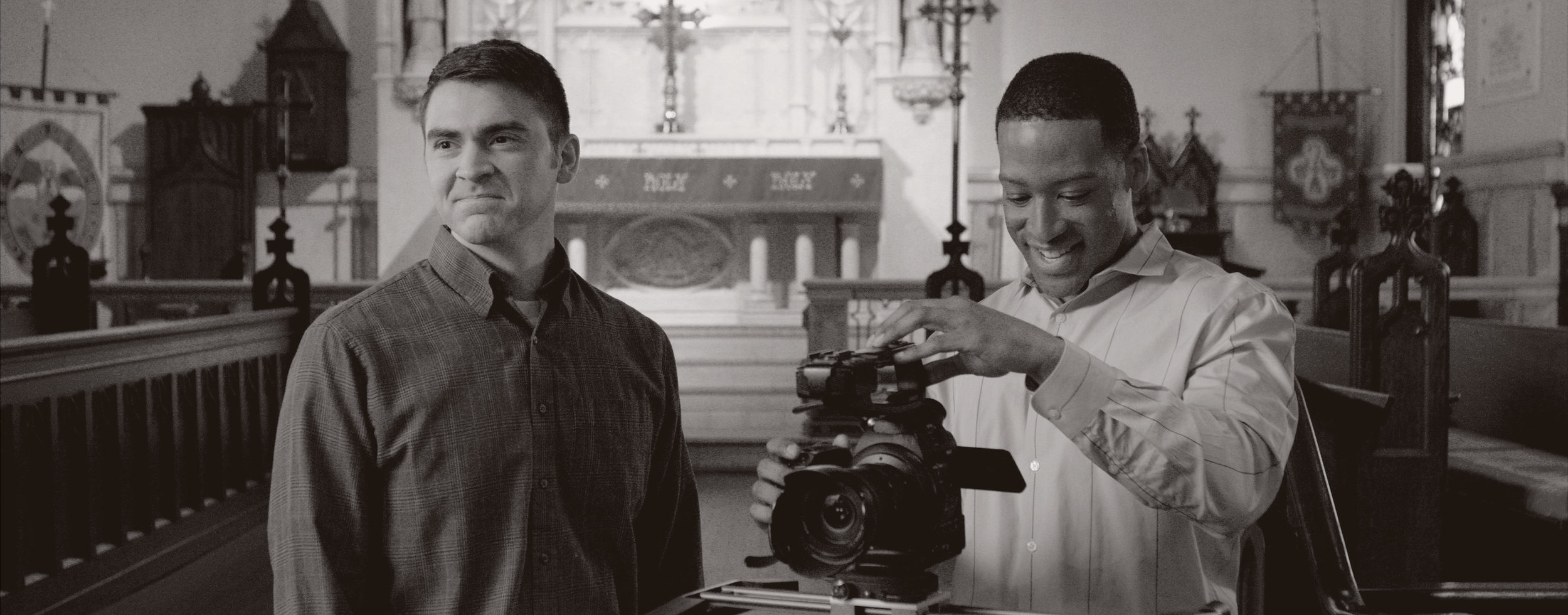
THE DAGTYPE STORY
The name of our company alludes to the dawn of photography: “Dagtype” is short for “daguerreotype,” the earliest form of photograph, introduced in 1839.
To create a daguerreotype, a thin copper plate would be coated with silver, then polished, then exposed to light. The resulting image would shift from positive to negative, depending on the angle at which it was held. Because of its silvery surface, the daguerreotype was highly reflective, and it came to be known as “the mirror with a memory.”
Our cofounders, Steven P. Neilson and Jon Lance Bacon, had been collecting daguerreotypes for several years when they formed Dagtype Films.
As digital technology revolutionized independent filmmaking, Steve and Lance felt they were part of a pioneering age, with a spiritual kinship to the daguerrean era. By naming their company Dagtype Films, they also linked the silver surface of the daguerreotype with the “silver screen” of cinema.
Appropriately, our animated logo incorporates one of our favorite daguerreotypes. It’s a stereoscopic image from the 1850s, of a beautiful young Frenchwoman who seems to be dreaming. And what is a movie, after all, but a dream you remember well?
STEVEN P. NEILSON
Producer
To his role as producer, Steve brings 30 years of managerial experience in the biopharmaceutical industry. Armed with an M.S. in Health Services Administration from the University of St. Francis, he has distinguished himself as an executive in Clinical Operations. So how did he get involved in filmmaking? For that, he can thank his Grandma Rose: she sparked his love for the movies by taking him to the Arnold Theater in Point Pleasant, New Jersey, throughout his childhood. Nowadays, Steve helps promote North Carolina filmmaking; he has hosted various film events and served on the advisory board for the Longleaf Film Festival in Raleigh.
JON LANCE BACON
Writer & Director
Lance comes to filmmaking by way of American Studies, having earned a Ph.D. in English from Vanderbilt University. He is the author of Flannery O’Connor and Cold War Culture, a book published by Cambridge University Press, as well as essays on film noir, apocalyptic fiction, and horror comics. Much of his scholarship has been inspired by his lifelong passion for the movies, beginning with creature features on late-night TV. In addition to literary analysis, his background includes teaching, copywriting, graphic design, and news reporting. He holds a B.A. in Journalism (Professional Writing) from the University of Oklahoma.



